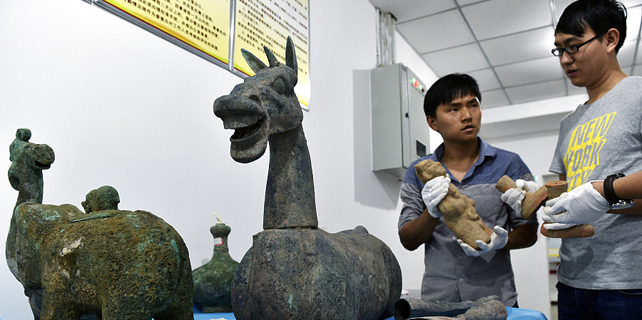Zongzi: An ancient snack born from folklore
The rice dumpling is believed to have originated during the Spring and Autumn Period (770-476 BC) as offerings to ancestors and deities. However, according to folklore, the dumpling was created following the death of Qu Yuan, a patriotic poet who committed suicide by drowning himself in the river after he failed to prevent his state from being invaded. In an attempt to prevent fishes from eating Qu's body, people threw packets of rice into the river, and rice dumplings thus came into being.
According to Song Ying, a folklorist with the Chinese Academy of Social Sciences, every household would traditionally make three types of rice dumplings for various purposes. The alkaline version is specially prepared as a tribute to ancestors and god while the savory variation is meant for festive consumption. Lastly, dumplings stuffed with vegetables are regarded as comfort food for children when they are sick.
Unlike other festive snacks that are usually consumed only during the holiday period, rice dumplings are available and enjoyed all year round in China as most of its ingredients are not seasonal. It is a popular breakfast and snack option as it quickly satiates hunger and can be easily transported.
It is estimated that there are more than 200 types of rice dumplings regularly made and sold in China. The most common are dumplings stuffed with savory pork and those filled with red bean paste. Modern varieties of the dumpling are usually filled with premium ingredients such as abalones, cured hams and lobsters.
While Jiaxing in East China's Zhejiang province is believed to be the hometown of the savory pork dumpling, there are a few other cities and towns in China that are reputed for their local versions.
In Zhaoqing, Guangdong province, the local dumpling weighs 500 grams and is significantly larger than its regular counterpart. It is meant to be shared by an entire family and is served like a Thai rice pudding. To reduce the greasiness of the dumpling, a large amount of green beans is mixed into the fillings to balance the taste.
In North China's Shanxi province, the local staple - millet - is used to replace glutinous rice. Nicknamed "gold" or "agate", this dumpling is filled with red dates and is usually consumed with a dash of white sugar.
















